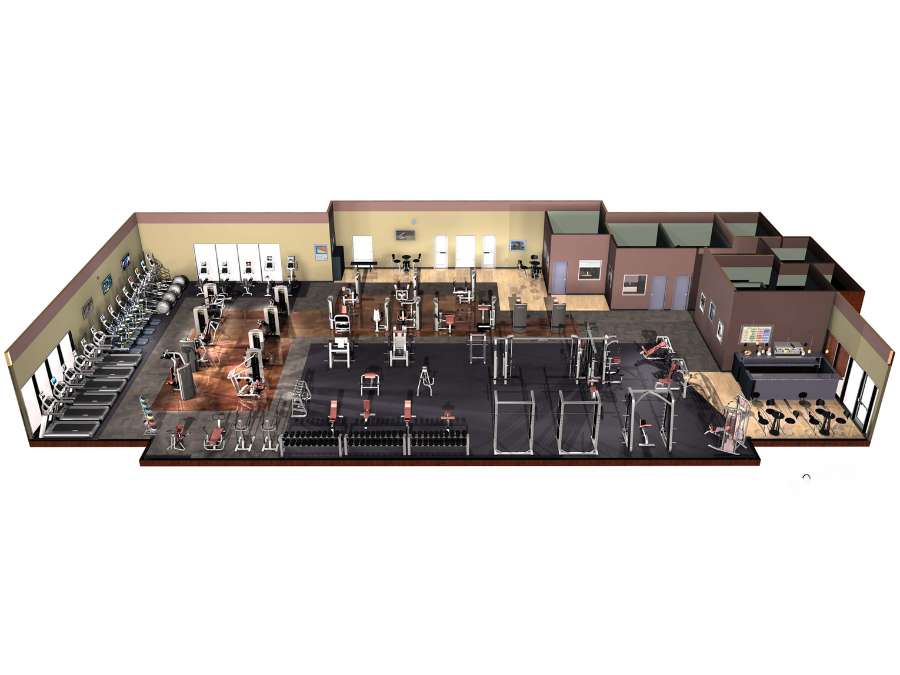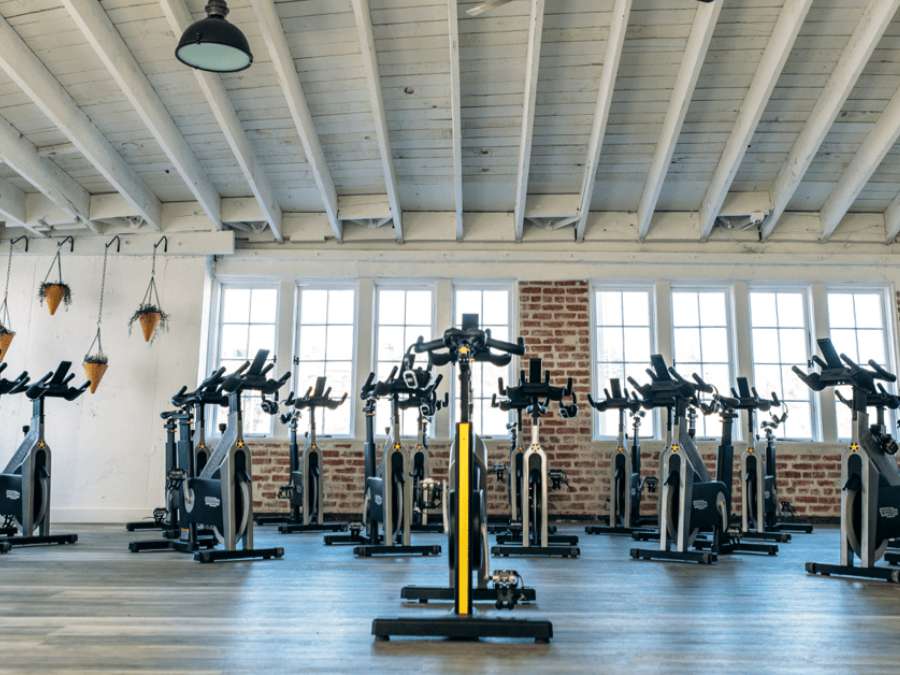Have you ever wondered what it takes to successfully open a gym? It’s a challenging journey, but with the right steps, it becomes much more achievable.
As a gym business expert with years of experience guiding fitness entrepreneurs, I can help you navigate the complexities of opening your first gym.
Starting a gym is about creating a community, managing operations, and ensuring growth. With a solid plan, your dream gym can become a reality.
In this guide, you’ll learn the essential steps to successfully open and run your first gym. Discover tips for planning, marketing, and creating long-term growth.
Keep reading to learn more!
Table of Contents
Step#1 Planning Phase
Before anything else, it’s absolutely essential to set a clear and compelling vision for your gym, as it will serve as the foundation for every decision you make moving forward. As a matter of fact, below are the major aspects to thoroughly consider during this critical planning phase:
- Research the Market: Begin by understanding the fitness demand in your area and identifying your target audience. This will help you determine if a general gym or a more specialized facility, like a yoga studio or powerlifting gym, is the best fit for the community.

- Set a Budget: Creating a detailed financial plan is crucial for keeping track of expenses, including rent, equipment, staffing, and marketing. Make sure that your budget includes both startup costs and ongoing monthly expenses to maintain smooth operations.

- Create a Business Plan: A well-thought-out business plan will serve as your roadmap. It should include your gym’s mission, target audience, services, pricing model, and a long-term financial strategy for sustainability and growth.
- Pick Your Gym’s Model: Decide whether to open an independent gym, franchise, or boutique fitness studio. Each model has its unique advantages and challenges, so weigh your options carefully based on your goals and budget.
Step#2 Location and Facilities
Finding the right location and setting up functional facilities is absolutely critical for ensuring your gym’s long-term success and member satisfaction. Below are important factors to focus on when making these pivotal decisions:
- Choose the Right Location: Your gym should be easily accessible to your target market, with good visibility and parking options. For instance, a prime location can help generate consistent foot traffic and attract new members.
- Design Functional Spaces: Your gym layout should balance different workout areas like cardio, weights, and group classes. Provide enough space for members to move freely, ensuring that the design enhances their overall workout experience.
- Consider Facility Size: The size of your facility will depend on your business model and member capacity. YR Fitness suggests to make sure your space can comfortably accommodate equipment, classes, and social areas for members to interact.
- Focus on Cleanliness and Maintenance: A clean, well-maintained gym is crucial for member retention. Additionally,plan for daily cleaning schedules and routine maintenance to keep equipment functioning properly and create a welcoming environment.

Step#3 Legal and Regulatory Considerations
Navigating the various legal requirements is an important and sometimes complex part of opening your gym, as adhering to regulations will protect your business and its operations. Below are essential considerations that you need to thoroughly evaluate during this stage:
- Obtain Licenses and Permits: You’ll need specific licenses and permits to operate legally, including zoning permits, health inspections, and business licenses. Research local regulations and secure the necessary documents before starting operations.
- Get Insurance Coverage: Protecting your gym with the right insurance policies is essential. Liability insurance, property insurance, and workers’ compensation will cover potential injuries, damages, and employee claims.
- Review Contracts and Waivers: Create clear membership contracts and liability waivers to protect your business legally. These documents should outline your gym’s rules, terms of membership, and release your gym from certain liabilities.
- Understand Employment Laws: If you plan to hire staff, familiarize yourself with local employment laws. Ensure that all employees are legally hired and that their rights are protected under labor laws.

Step#4 Branding and Marketing
Creating a strong and memorable brand, along with effectively promoting your gym, will play a crucial role in attracting new members and establishing a positive reputation in the community. Below are the key elements to keep in mind as you develop your marketing strategy:
- Develop Your Brand Identity: Your gym’s brand should reflect its mission and resonate with your target market. From your gym’s name and logo to the overall atmosphere, consistency in branding is key to building a recognizable and trustworthy business.

- Build a Website and Social Media Presence: A professional website and active social media accounts will help potential members discover your gym. For instance, include key information such as your gym’s services, class schedules, and pricing on both platforms.
- Use Targeted Advertising: Digital marketing, such as Google and social media ads, can help you reach your local audience effectively. Target potential members based on demographics like location, age, and fitness interests.
- Offer Introductory Promotions: To attract new members, consider offering limited-time promotions, such as free trials or discounted memberships. These offers can encourage people to try your gym and sign up for longer-term memberships.
Step#5 Hiring and Training Staff
Hiring the right staff is absolutely crucial to running a successful gym, as your team will directly impact the overall experience and satisfaction of your members. Here are detailed steps to help you build a great team that aligns with your vision and goals:
- Hire Qualified Staff: Look for staff with proper certifications, such as personal trainers, group fitness instructors, and customer service representatives. They should have experience in the fitness industry and excellent communication skills.
- Provide Onboarding and Training: Once hired, ensure that new staff receive proper onboarding and ongoing training. This includes familiarizing them with your gym’s policies, customer service expectations, and safety procedures.
- Foster a Positive Work Environment: A supportive and motivating environment helps your team feel valued. Encourage open communication, set clear goals, and recognize staff achievements to maintain a positive workplace culture.
- Establish a Member-Centric Focus: YR FItness recommends to train your staff to prioritize member experience. They should be friendly, approachable, and knowledgeable, making each member feel welcome and supported during their fitness journey.

Step#6 Gym Operations
Smooth day-to-day operations are essential for long-term success. Below are the key operational aspects that you should actively manage to keep your gym running efficiently:
- Create Efficient Systems: Implement systems for scheduling classes, managing memberships, and handling payments. These systems will help you streamline operations and keep track of member activity.

- Maintain Equipment Regularly: Regular maintenance of gym equipment is necessary to avoid breakdowns and establish a safe workout environment. Create a schedule for cleaning, inspecting, and repairing equipment.

- Monitor Member Feedback: Listening to your members is important for improving your services. Use surveys, suggestion boxes, or one-on-one conversations to gather feedback on what’s working and what can be improved.
- Track Financial Performance: Keep a close eye on your gym’s financial health by regularly reviewing your income and expenses. This will help you identify areas where you can cut costs or invest more to grow your business.
Step#7 Building a Community
A strong sense of community can set your gym apart and help with member retention. Below are ways to foster community:
- Host Social Events: Organize events such as fitness challenges, open houses, or member appreciation days. These activities allow members to connect and create a supportive environment.
- Encourage Group Classes: Group fitness classes are a great way to bring members together. Encourage participation and create a diverse class schedule to accommodate different fitness levels and interests.
- Engage Members Online: Create an online community through social media or a member-only group. This can be a space for members to share fitness tips, success stories, or stay updated on upcoming events.
- Recognize Member Achievements: Celebrate milestones like weight loss, strength gains, or participation in gym events. Acknowledging these achievements shows members that their progress matters and motivates them to continue their fitness journey.

Step#8 Retention and Growth Strategies
Once your gym is up and running, focus on keeping members happy and expanding your business. Below are strategies for retention and growth:
- Offer Personalized Services: Consider offering personalized services such as one-on-one training or tailored fitness programs. This can add value to your membership and increase retention rates.
- Implement a Referral Program: A referral program with incentives like free classes or discounts can motivate members to bring in new clients. According to Saufter, established businesses using these programs for at least six months see an average referral rate of around 2%.
- Continuously Improve Services: Regularly update your equipment, offer new classes, and listen to member feedback to keep your gym fresh and exciting. Continuous improvement helps you stay competitive in the fitness industry.
- Expand Through Partnerships: Partner with local businesses or fitness influencers to increase your gym’s visibility. These collaborations can lead to new members and broaden your reach in the community.
Here’s a table summarizing retention and growth strategies for your gym:
Strategy | Benefit |
Offer Personalized Services | Increases member retention by adding value through one-on-one training and tailored fitness programs. |
Implement a Referral Program | Encourages members to bring in new clients, boosting membership growth with incentives like free classes or discounts. |
Continuously Improve Services | Keeps your gym competitive by updating equipment, offering new classes, and responding to member feedback. |
Expand Through Partnerships | Increases visibility and membership by collaborating with local businesses and fitness influencers. |
Conclusion
Opening a gym requires careful planning and execution, but having the right tools and knowledge makes the process smoother. From the planning phase to the retention strategies, each step plays a crucial role in building a successful fitness business. With the right equipment, proper staff, and attention to member satisfaction, your gym can thrive in a competitive industry.
In conclusion, selecting the right gym equipment is essential for creating a space that meets both safety and functionality standards. YR Fitness specializes in providing high-quality, durable equipment that supports the needs of growing fitness centers. If you’re looking for reliable and effective gym equipment to support your new venture, contact us today.
Dive Deeper Into Our Resources
For some insightful reads, we’ve curated a list of recommended articles just for you:
- Opening A Gym In A Small Town
- Open A Crossfit Gym
- Opening A Gym
- Starting A Non-profit Gym
- Women’s Only Gym
Still haven’t found what you’re looking for? Don’t hesitate to contact us. We’re available around the clock to assist you.
Related articles:





